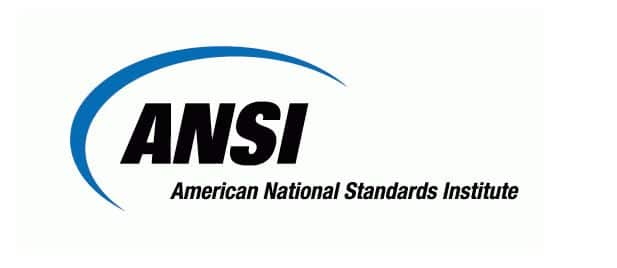Measuring a hearing aid to ANSI (American National Standards Institute) Standards should be a first step before any programming of the hearing aid is attempted. While it is assumed that the hearing aids meet ANSI Standards, as measured and sent by the manufacturer, confirmation of the hearing aid’s basic foundation is necessary to ensure that the eventual programming of the hearing aid starts from a solid and known foundation1. Unfortunately, such measurements seldom, if ever, are made before a hearing aid is programmed.
 Is it “okay” to assume that hearing aids meet ANSI Standards when they arrive? A recent study by Holder, et al (2016), as discussed in a previous post, reported that of 73 hearing aids tested, results showed that none were within the allowable tolerance for every specification, with the exception of Max OSPL902.
Is it “okay” to assume that hearing aids meet ANSI Standards when they arrive? A recent study by Holder, et al (2016), as discussed in a previous post, reported that of 73 hearing aids tested, results showed that none were within the allowable tolerance for every specification, with the exception of Max OSPL902.
To be clear, ANSI does require a set of conditions to be met for ANSI measurements. Specifically, the settings are as follows:
Basic settings of controls
The hearing aid shall be set to have the widest available frequency response range, the greatest available HFA-OSPL90 and, if possible, the greatest HFA-FOG. Where possible, the AGC (automatic gain control) function of AGC hearing aids shall be set to have minimum effect for setting the gain control to RTS (reference test setting) and for all tests except those of section 6.15. Other adaptive features such as some noise suppression and feedback reduction systems, etc., which may affect the validity of the measurements made with steady-state pure tone signals should be disabled. For the tests of section 6.15, the AGC function shall be set to have maximum effect. The settings used for testing shall be specified by the manufacturer by providing either a test program, a set of programmed settings or by reference to physical control settings. For the purposes of this standard, expansion shall be considered as part of the AGC function3.
Is this important measurement step taken routinely? This author doubts that it is seldom, and never taken by most who dispense hearing aids. Figure 1 shows the results of measurements taken on 12 premium hearing aids to determine how closely they meet ANSI Standards. These were all received as normally-purchased hearing aids directly from manufacturers. All were RIC (receiver-in-canal) instruments.

Figure 1. Twelve premium hearing aids measured according to ANSI Standards. The pink-colored areas represent measurements falling outside ANSI tolerances. Blue represents measurements better than the tolerances. The yellow areas, in question marks, indicate that no determination could be made because of insufficient information, or in the case of one instrument, it was rechargeable and the battery could not be removed for current drain to be measured.
Comments Relative to Measurements in Which Tolerances Are Involved
Note that not all ANSI measurements have tolerance requirements. These will be identified in the discussion that follows. Reference is made to Figure 1. All measurements were made with factory level test equipment, the Frye Electronics 8000 Hearing Aid Analyzer.
OSPL90 – ANSI tolerance is to not exceed the manufacturer’s specification by +3dB. None of the hearing aids exceeded this value. In fact, all were below this number ranging from -0.3 to -6 dB, or an average of -2.85. It appears that manufacturers take exceeding this value seriously, keeping the OSPL90 (output saturation pressure level at 90 dB signal input) lower by approximately 3 dB.
HFA-OSPL90 – None of the hearing aids exceeded the ±4 dB tolerance for this measurement (high-frequency average output saturation pressure level with 90 dB input signal). All but two were under the published value, which might be expected based on the OSPL90 measurements.
FOG Peak – No tolerance is required for this measurement (full-on gain) from that which is published. However, the range from published data was rather wide – from +11 to -15.
HFA FOG – This measured value is to be within ±5 dB of the published specification (high-frequency average full-on gain). Two of the instruments fell outside this area, both on the minus side. Only two of the instruments fell above the published value, while all the others were below, ranging from -6 to -1.1 dB.
Current Drain mA – Current drain (in milliamp) tolerance is the published value, plus 20%. Half of the hearing aids exceeded this tolerance. One of the instrument’s current drain could not be measured using traditional procedures because it used an internal rechargeable battery.
Battery Life in Hrs. – No tolerance figure exists for this measurement.
EIN dB – Equivalent Input Noise (EIN) measured value is not to exceed the published value by more than 3 dB. Of the twelve instruments, two fell outside this tolerance range. However, half of the instruments (six) measured lower than the published EIN. Having been involved in writing hearing aid specifications, that the publshed data is higher is not unexpected. It is better to have EIN measured lower than published than the other way around. This is most likely intentional on the part of the manufacturer. Overall, the average EIN in dB was 20.4, with a range of 17 to 26. The lowest measured was 13.2 and the higherst at 40.5 dB. This essentially represents the noise floor of the hearing aid.
Freq. Lower – No tolerance value exists for this feature. The test equipment frequency measurement range started at 200 Hz. As a result, any response below this frequency could not be recorded, other than to indicate that the response was lower than 200 Hz (e.g. <200 in the data). Of the instruments, six had a higher measured frequency range than provided in the manufacturers’ specifications by an average of 115 Hz.
Freq. Upper – No tolerance value exists for this feature. The test equipment frequency measurement range extended to 8000 Hz. As a result, any response above this frequency could not be recorded, other than to indicate that the response was higher than 8000 Hz (e.g. >8000 in the data). Of the instruments, nine had a lower measured frequency range than provided in the manufacturers’ specifications. One was lower than the published specifications by just over 3000 Hz. For those instruments publishing a 10,000 Hz upper range (three instruments), one measured below 8000 Hz (6777 Hz). Of the ten hearing aids where measurements were below 8000 Hz, the average response was lower than the published specification by 1106 Hz.
THD – Total Harmonic Distortion (THD) was measured at the frequencies of 500, 800, and 1600 Hz. The ANSI standard calls for a tolerance of no greater than +3% of the published value. One has to wonder, with today’s digital hearing aids, if this tolerance factor is even an issue. For example, 3% of 1% THD is 0.36. Added to the value of 1%, this means that the allowable tolerance is 1.36%. Based on calculating these percentages for each of the three frequencies used for THD measurements, it is not surprising that a number of the hearing aids had tolerance measurements outside the acceptable values. But really, what is the perceptable difference between 1 and 1.2 THD? But, this value exceeds the tolerance acceptance. Of the instruments, only one (hearing aid #9), a rechargeable unit had THD values of perhaps some significance. Most would agree that THDs at 500 Hz under 2% are not worthy of concern.
Response Curve – One measurement not calculated was that of the response curve. A cursory observation of measured response curves relative to the manufacturers’ specifications, suggests that some of these instruments would fail this test. This calls for ±4 dB within the curve from 200 to 2000 Hz, and ±6 dB from 2000 to 4000 Hz, or 0.8f2.
Input/Output – Not all of the hearing aids showed a linear input/output function, which would be expected if the hearing aid is set to linear. The Standard does require that the aid be set to linearity or to its lowest AGC activity, but some of the hearing aids still showed non-linear function, including three that showed expansion.
Time Constants – Attack and release time tolerances (not shown in Figure 1) were seldom met. The most common deviation is represented by the release time graphs of Figure 2. In some hearing aids the instrument never “stabilized” within 1000 msec., way beyond its published recovery time. What seems to be more commonly seen is the inability of the instrument to stabilize during recovery. It is not clear what the circuit action is attempting to do that creates such long instability during recovery.

Figure 2. Attack and release times for three of the twelve hearing aids testing, showing the instability of adjusting to the new level, especially for the release time.
Should Hearing Aid Professionals Check The Hearing Aids They Fit Prior to Programming?
The results of hearing aid measurements suggests that this would be good to do. A problem with this, however, is that most clinic/office hearing aid measurement units do not have calibrated microphones of the range and sensitivity to make such measurements. Factory instruments do.
Conclusion
The results of this investigation into hearing aids meeting ANSI Standards shows that one cannot blindly assume that all new hearing aids are in compliance.
References
- Frye, G., and Staab, W.J. Hearing aid analyzers…factory floor testing as a start. Hearing Health and Technology Matters, January 24, 2017, https://hearinghealthmatters.org/waynesworld/2017/hearing-aid-analyzers-factory-floor-testing-start/.
- Holder J, Picou E, Gruenwald J, Ricketts T. (2016). Do modern hearing aids meet ANSI standards? J Am Acad Audiol 27(8):619–627.
- ANSI S3.22-2003. (Revision of ANSI S3.22-1996). AMERICAN NATIONAL STANDARD Specification of Hearing Aid Characteristics. Accredited Standards Committee S3, Bioacoustics. Standards Secretariat Acoustical Society of America 35 Pinelawn Road, Suite 114 E Melville, NY 11747-3177.
*this article originally appeared at Waynes World on January 31, 2017
 Wayne Staab, PhD, is an internationally recognized authority on hearing aids. His professional career has included University teaching, hearing clinic work, hearing aid company management and sales, and extensive work with engineering in developing and bringing new technology and products to the discipline of hearing. Dr. Staab is the Founding Editor of Wayne’s World and served as the Editor-In-Chief of HHTM from 2015 to 2017.
Wayne Staab, PhD, is an internationally recognized authority on hearing aids. His professional career has included University teaching, hearing clinic work, hearing aid company management and sales, and extensive work with engineering in developing and bringing new technology and products to the discipline of hearing. Dr. Staab is the Founding Editor of Wayne’s World and served as the Editor-In-Chief of HHTM from 2015 to 2017.






